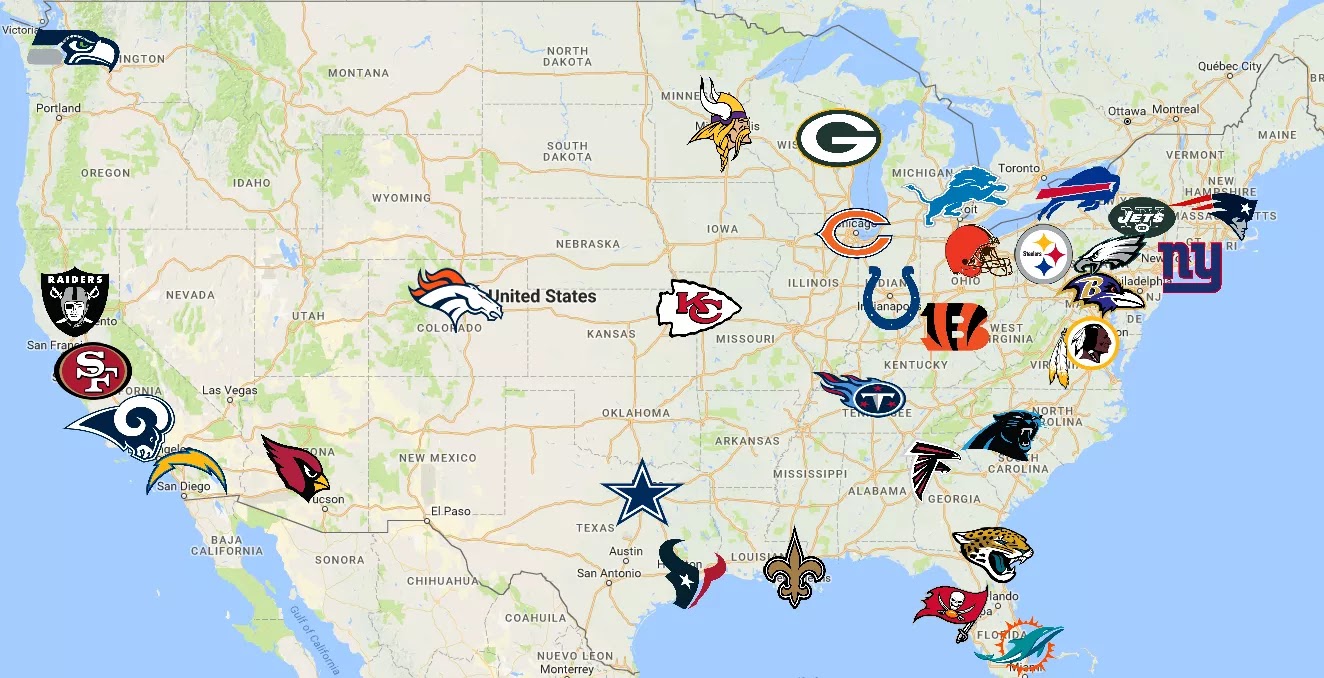The NFL Teams Map is more than just a geographical representation of where each team is located; it is a reflection of the culture, passion, and identity that each franchise embodies. For fans, understanding the NFL landscape can enhance their appreciation of the game and its rich history. Whether you are a die-hard supporter of a particular team or a curious newcomer exploring the intricacies of the league, the NFL Teams Map serves as an essential tool for navigating through the diverse regions that these teams represent.
Each team carries with it a unique backstory, a dedicated fan base, and a home turf that contributes to the vibrant tapestry of American football. From the bustling streets of New York to the sunny shores of Los Angeles, the geographical distribution of NFL teams reveals much about the cities and communities that rally behind their local franchises. With this article, we aim to provide an insightful look into the NFL Teams Map, exploring how geography influences the sport and its fans.
In addition to the geographical layout, we will delve into the significance of team rivalries, the history of franchise relocations, and even how the NFL Teams Map has evolved over the years. By the end of this article, you will not only understand where each team is located, but you will also gain a deeper appreciation for the game and its cultural significance across America.
What Is the NFL Teams Map and Why Is It Important?
The NFL Teams Map showcases the geographical locations of all 32 teams in the National Football League. This map is essential for various reasons:
- It helps fans identify the nearest teams to their location.
- It illustrates the regional rivalries that can intensify the competition.
- It provides insight into how the league has expanded and relocated franchises over time.
How Are NFL Teams Distributed Across the United States?
The distribution of NFL teams is not uniform, as some states boast multiple franchises while others have none. The concentration of teams is particularly high in populous areas, which often correlates with a larger fan base. For example:
- California has three teams: the San Francisco 49ers, the Los Angeles Rams, and the Los Angeles Chargers.
- The state of Texas is home to two teams: the Dallas Cowboys and the Houston Texans.
- Conversely, states like Montana and Wyoming do not have any NFL teams.
What Are the Historical Trends in NFL Team Locations?
Over the years, several teams have relocated, leading to changes in the NFL Teams Map. Historical trends include:
- Franchises moving to larger cities for better revenue opportunities.
- Teams rebranding themselves after relocation to create a fresh identity.
- The impact of stadium deals on franchise locations.
How Do Regional Rivalries Shape the NFL Teams Map?
Rivalries are a crucial aspect of the NFL, and they often stem from geographical proximity. These rivalries can influence fan engagement and attendance, making them essential to the NFL ecosystem. Some notable rivalries include:
- The Chicago Bears and the Green Bay Packers, a rivalry dating back over a century.
- The New York Giants and the Philadelphia Eagles, which has resulted in intense matchups.
- The San Francisco 49ers and the Seattle Seahawks, a contemporary rivalry that has gained traction in recent years.
What Role Do NFL Teams Play in Their Local Communities?
NFL teams often serve as more than just sports organizations; they become integral parts of their local communities. This can be seen through:
- Community outreach programs aimed at supporting local charities.
- Youth initiatives that promote sports and healthy living among children.
- Economic benefits that arise from game-day events and stadium developments.
How Has the NFL Teams Map Changed Over Time?
The NFL Teams Map has seen significant changes since the league's inception in 1920. Key milestones include:
- The merger with the American Football League (AFL) in 1970, which added several franchises.
- Expansion efforts in the 1990s and 2000s that led to the creation of new teams.
- The relocation of teams, such as the St. Louis Rams returning to Los Angeles in 2016.
What Are the Future Prospects for the NFL Teams Map?
Looking ahead, the NFL Teams Map could continue to evolve. Potential developments include:
- Possibility of new teams being added in cities without a franchise.
- Future relocations based on market performance and fan engagement.
- Increased globalization of the NFL, with games played in international markets.
How Can Fans Utilize the NFL Teams Map?
Fans can leverage the NFL Teams Map for various purposes, including:
- Planning travel to attend games and explore different cities.
- Connecting with other fans in their region.
- Participating in fantasy leagues by understanding team matchups across the country.
Conclusion: Embracing the NFL Teams Map
Understanding the NFL Teams Map is essential for fans who want to immerse themselves in the vibrant culture of American football. It provides a framework for appreciating team histories, rivalries, and the geographical significance of the league. Whether you are looking to connect with fellow fans or explore the local culture surrounding your favorite teams, the NFL Teams Map serves as a gateway to a deeper understanding of the game we all love.



